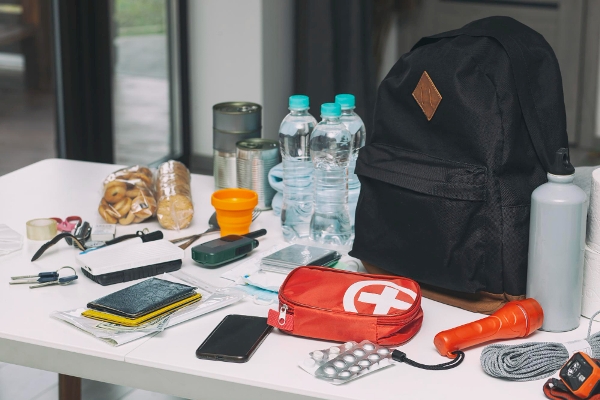A hurricane of any strength is an extremely stressful and terrifying situation. However, Hurricane Ian, a Category 4 storm, put thousands of Floridians at risk. Record-breaking rainfall, harsh winds, flooding, and enormous storm surges obliterated property and led to the tragic deaths of now 100 individuals. Unfortunately, Hurricane Ian’s death toll has steadily risen in just a few days. With rescue crews still combing for survivors, the death count may sadly continue to increase. There is only so much one can do to shield themselves from a hurricane since these storms are unstoppable forces of nature. Yet, there are safety measures you can implement to decrease your chance of injury. Continue reading to learn more about critical safety tips to follow during a hurricane.
Follow Evacuation Orders
If you are in a zone under an evacuation order, you should always abide by these directions. We understand that it is difficult to abandon your home. But, if you stay, then you put your life in jeopardy. A hurricane’s high-force winds can easily tear off your roof and expose you to the elements. Meanwhile, intense floods can rapidly overtake your house and trap you inside. Massive storm surges can batter your property with gigantic waves if you reside on the coast. Check your state’s hurricane evacuation map to learn more about your zone and whether you live or work in an evacuation area. Always take an evacuation order very seriously and defer to your escape plan and route. Do not delay an evacuation as this could help you escape traffic and harm’s way.
Locate a Safe Spot
If you remain at home during the hurricane, understand that you must take careful precautions to ensure your well-being. Choose a well-protected location to ride out the hurricane. Safer spots in your home in the event of a hurricane include:
- Interior room
- Closet
- Storm shelter
- Bathroom
Regardless of the specific location, be sure you are far away from windows, skylights, and sliding glass doors. These fixtures can break during a powerful storm and send flying glass and debris at you. Furthermore, shattered glass fixtures create an entryway for water, and the broken glass presents a walking hazard. If your house begins to flood, seek refuge at higher levels. However, do not enter an attic during flooding because you could become trapped inside.
Know When and How to Turn off Energy Sources
Some homeowners do not know where to find the main water, electricity, and gas valves. It is vital to understand where the master valves are for utilities. When a hurricane cuts off power, turn off the primary electricity source in your home. If you leave it on, when the power returns, it can fry your appliances or cause a fire. Additionally, turn off the power if your house is in danger of flooding to avoid any electrocution hazards. Also, if the power goes out, it is safer to turn off the main gas valve to your property as well. Although rare, a power outage can increase the gas supply to your home and result in a fire or explosion.
Listen to Weather Advisories
The conditions of a hurricane are often unpredictable and susceptible to change. Therefore, you should constantly listen to the radio, watch the television, or check your phone for any updates on the storm’s progress. Even if you were not initially under an evacuation order, this may change quickly, so please be prepared to evacuate at any time. Staying current on the news surrounding the hurricane can be the difference between evacuating in time or getting caught in the storm. A battery-powered radio is best because a storm can knock out power, internet, and cellular services. Tune into the National Weather Service on your battery-powered radio to listen to 24-hour forecasts, warnings, and watches for the hurricane.
Also, keeping up to date through the National Weather Service is the most reliable way to know if the hurricane has passed. It goes without saying that you should stay indoors throughout a hurricane. However, sometimes calmer conditions can lull people into a false sense of security. If it appears that the storm has dissipated outside, await further instructions. These tame conditions may actually be the eye of the storm.

